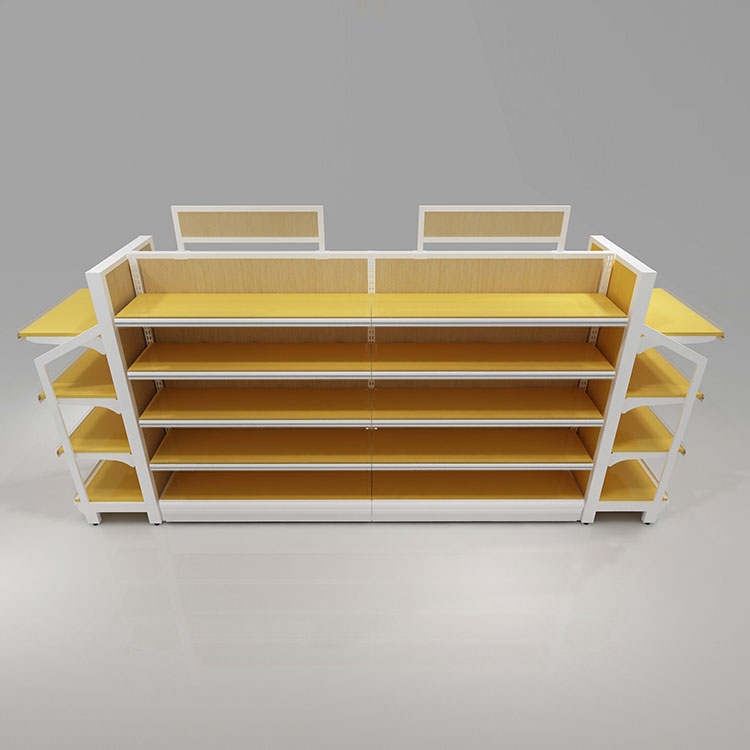Why Building Materials Display Racks Are Redefining the Future of Material Showrooms?
2025-11-04
In the world of modern architecture and interior design, Building Materials Display Racks play a pivotal role in transforming how construction materials are showcased, experienced, and sold. These racks are specialized display systems designed to organize, highlight, and promote a wide range of materials—such as tiles, marble, wood panels, laminates, flooring, and decorative stones—within showrooms or trade exhibition spaces. Unlike traditional shelving systems, building material display racks aroom with Professional Display Solutions
The transformation of showrooms in the building materials industry reflects a shift toward efficiency, aesthetics, and interactive engagement. Building Materials Display Racks have become the silent salesforce thre engineered for aesthetic presentation, functionality, and space optimization.
The growing sophistication of construction materials has created a need for more effective display methods. Customers today don’t simply want to see materials—they want to visualize how these materials will look in real applications. This is where display racks serve as both a sales tool and an experiential aid.
Modern display racks are no longer just storage fixtures; they are strategic marketing instruments that influence buyer decisions by presenting products in a clear, organized, and visually appealing manner.
These racks are available in a range of configurations—floor-standing displays, rotating racks, sliding panels, pull-out drawers, sample boards, and wall-mounted systems—each serving a specific material type and showroom layout.
Below is a professional overview of standard product specifications that define the modern Building Materials Display Rack:
| Parameter | Specification Details |
|---|---|
| Material Composition | High-quality steel, aluminum alloy, MDF boards, and powder-coated finishes |
| Available Sizes | Customized according to showroom space; standard widths from 600mm to 1200mm per panel |
| Surface Treatment | Anti-corrosion powder coating, anodizing, or painting for enhanced durability |
| Load-Bearing Capacity | 80–200 kg per shelf, depending on material thickness and design |
| Display Options | Sliding display, rotating carousel, tilting board, or vertical stacking |
| Color Options | Matte black, silver grey, white, and customized RAL colors |
| Assembly Type | Modular design for easy installation and disassembly |
| Applications | Tile showrooms, stone galleries, wood flooring shops, building material exhibitions |
| Customization | Logo printing, rack sizing, sample panel adaptation, and lighting integration |
Such versatility and technical refinement have made these display racks indispensable in professional retail environments.
Why Are Building Materials Display Racks Becoming a Key Element in Modern Showrooms?
A. Enhancing Customer Experience
In the modern construction and design industry, visual impact sells. Customers are more likely to purchase when they can touch, compare, and visualize materials in a realistic display environment. Building Materials Display Racks make this process seamless by enabling organized and attractive presentations of hundreds of material samples in limited space. The ability to rotate, slide, or flip samples adds interactivity, turning simple showrooms into immersive design galleries.
B. Improving Space Utilization
Real estate costs for showrooms are high, which makes space efficiency critical. A well-designed display rack maximizes floor usage, allowing businesses to present a greater variety of materials without crowding the showroom. Modular systems enable dynamic arrangements—store owners can easily rearrange or expand displays based on inventory changes or promotional needs.
C. Strengthening Brand Image
An organized and aesthetically cohesive display environment reflects the professionalism of the brand. Whether in tile stores or wood flooring exhibitions, the uniform design of display racks communicates brand reliability and attention to detail. Integrating custom colors, brand logos, and lighting helps create a memorable showroom identity that resonates with clients and architects alike.
D. Facilitating Easy Maintenance and Longevity
Modern building materials racks are engineered from robust materials that withstand constant use, moisture, and dust exposure. Powder-coated metal frames ensure rust resistance and extended product lifespan, making them a cost-effective investment for long-term showroom operations.
E. Boosting Sales Efficiency
With an organized presentation of samples, sales personnel can demonstrate material options more efficiently, saving time and improving customer satisfaction. The layout of materials in display racks also facilitates comparison by color, texture, and finish—an essential factor influencing purchasing decisions.
How to Choose the Right Building Materials Display Rack?
Selecting the ideal display rack depends on the type of materials, available space, and target audience. The following strategic considerations help in choosing the most suitable system for any showroom:
-
Material Type and Weight – Heavy materials like stone and marble require reinforced racks with steel structures and high load-bearing capacities.
-
Display Purpose – Sliding racks work best for tiles and laminates, while rotating carousels are ideal for multi-sample viewing in compact spaces.
-
Aesthetic Integration – The rack should complement the showroom’s overall design theme, with coordinated color and texture.
-
Flexibility and Scalability – Modular systems allow for future expansion as product lines grow.
-
Lighting and Branding – Integrated LED lights can enhance visual presentation, while custom branding on frames elevates professionalism.
-
Ease of Assembly and Maintenance – Choose designs that allow simple setup, relocation, and cleaning.
A well-planned display system reflects the business’s vision for quality and organization. When customers walk into a showroom, the presentation quality often determines whether they perceive the brand as a premium supplier or just another vendor.
Design Innovation and Future Trends
The future of building material displays is heading toward smart, interactive, and digital integration. Display racks are evolving from static furniture to dynamic presentation tools equipped with digital touchscreens, AR previews, and data-driven layout planning. In addition, eco-friendly materials and modular recyclability are becoming key factors for sustainable showroom design.
By combining craftsmanship with technology, manufacturers are redefining how materials communicate their texture, pattern, and visual depth. This technological integration is expected to revolutionize customer engagement, making display racks the centerpiece of experiential marketing in construction material retail.
Common Questions About Building Materials Display Racks
Q1: How long does a building materials display rack typically last?
A: With proper maintenance, a high-quality rack made from steel or aluminum can last over 10 years. The powder-coated finish prevents corrosion, while the modular design allows parts to be replaced individually, extending the overall product life cycle. Maintenance includes regular dusting, checking for loose fittings, and avoiding exposure to excessive humidity.
Q2: Can the display racks be customized to fit specific showroom layouts?
A: Yes. Most manufacturers, including Quanzhou Zhongbo Display Props Co., Ltd, offer fully customizable solutions. The design can be tailored in terms of dimensions, structure, material type, and even integrated lighting or signage. This ensures that each rack complements the overall aesthetic and functional needs of the showroom.
The Future of Building Materials Display: From Static Presentation to Interactive Experience
As the construction industry continues to globalize and design trends evolve rapidly, display innovation becomes a decisive factor in market competitiveness. Traditional shelves are being replaced by interactive racks capable of combining physical samples with digital catalogs and augmented reality displays.
Retailers are moving toward hybrid display systems, which allow clients to scan a QR code on each rack, view detailed product specifications, or visualize materials within a 3D-rendered room on screen. This combination of physical interaction and digital convenience enhances decision-making speed and confidence.
Moreover, sustainability is driving new material choices. Manufacturers are adopting recycled aluminum frames, eco-friendly powder coatings, and detachable modules, reducing environmental impact while preserving durability. The growing demand for green construction solutions is pushing display rack producers to align their designs with environmental certification standards such as LEED and ISO 14001.
In addition, ergonomic design principles are shaping how users interact with display systems. Adjustable heights, smooth-sliding tracks, and lightweight panels improve accessibility for customers and sales teams alike. The future display rack will not only serve as a product holder but as a bridge between brand storytelling, design inspiration, and client experience.
Conclusion: Shaping the Modern Show
at speaks through design, structure, and functionality. They allow customers to connect with materials in ways that are intuitive, educational, and emotionally engaging.
As competition intensifies, the role of customized display systems becomes even more crucial. Businesses that invest in professional, adaptable, and branded racks can differentiate themselves through showroom experience, not just product variety.
Among the pioneers in this field, Quanzhou Zhongbo Display Props Co., Ltd stands out as a manufacturer known for high-quality craftsmanship, advanced engineering, and customer-oriented customization. Their commitment to durability, innovation, and design excellence continues to shape how building materials are displayed and perceived worldwide.
For those seeking to elevate their showroom presentation and create an impactful material display experience, it’s time to contact us and discover how a customized Building Materials Display Rack can redefine your space and strengthen your brand identity.



